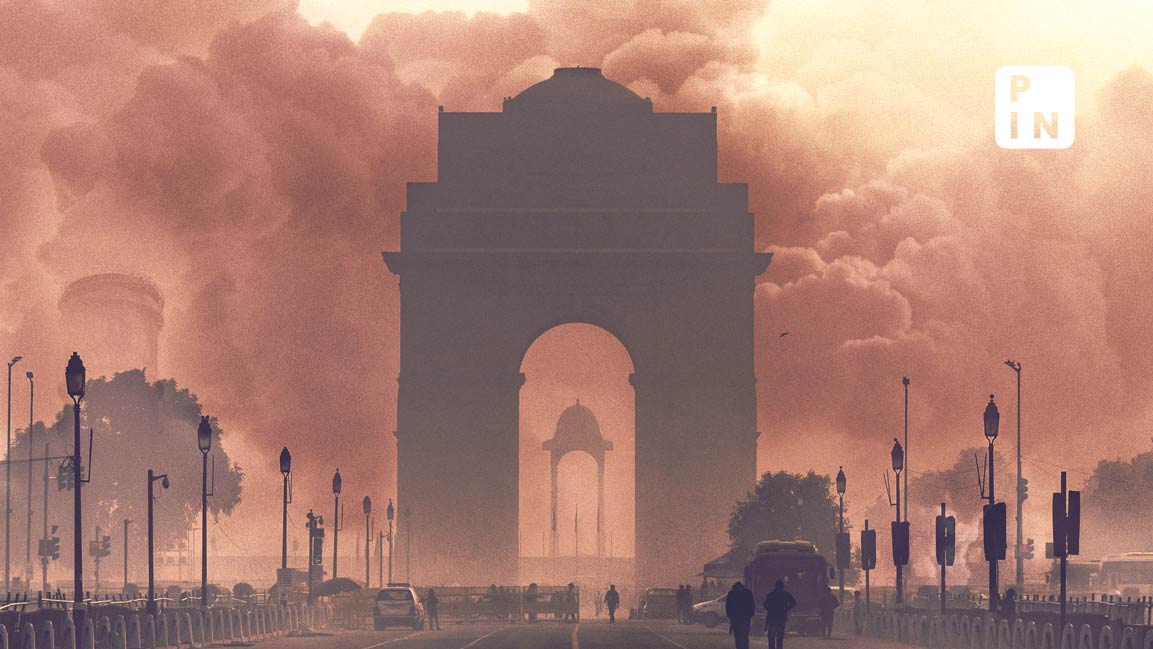- | 1:00 pm
India ranks third in worst air quality, has 42 cities among top 50
Begusarai in Bihar is the most polluted metropolitan area in the world, followed by Guwahati and Delhi, study shows

India’s air got much worse in 2023, making it the third worst globally, and Delhi the top polluted capital.
Average annual PM2.5 concentration in India reached 54.4 micrograms per cu. m, exceeding the World Health Organization’s (WHO) safe limit by more than 10 times, the 2023 World Air Quality Report by IQAir said .
PM2.5 is fine particulate matter smaller than 2.5 micrometers in diameter, a major air pollutant harmful to human health.
Bangladesh and Pakistan topped the list of most polluted nations with even higher PM2.5 concentrations.
The study found 42 Indian cities among the top 50 most polluted globally, with Begusarai, Guwahati, and Delhi topping the list.
Begusarai’s air quality declined drastically, with PM2.5 concentration skyrocketing from 19.7 micrograms per cu. m in 2022 to 118.9 in 2023.
Guwahati also saw a significant decline in air quality, with PM2.5 concentration doubling from 51 to 105.4 micrograms per cu. m.
Delhi’s air quality worsened in 2023, with PM2.5 levels rising 10% compared to 2022.
November saw the worst air quality, with a monthly average PM2.5 concentration of 255 μg/m3, exceeding WHO’s annual guideline by over 50 times.
According to the report, northern India — including Delhi — faces a complex air pollution problem due to a mix of factors.
Smoke from seasonal crop burning, vehicle emissions, coal and waste burning, and even household cooking fires all contribute.
This is particularly severe during the annual crop burning season in northern India and neighboring Pakistan, which regularly pushes Delhi’s air quality into the emergency zone.
In an attempt to combat this, Indian scientists explored cloud seeding as a possible solution to clear the smog in November 2023.
The report analyzes PM2.5 data from 30,000 monitoring stations across 7,812 cities in 134 countries and the data comes from a diverse range of sources, including research institutions, governments, universities, NGOs, private companies, and even citizen scientists.
The report highlights a broader global issue. Only seven countries achieved the World Health Organization’s annual PM2.5 guideline for clean air in 2023. These leaders include Australia, Estonia, Finland, Grenada, Iceland, Mauritius, and New Zealand.
While these countries boast clean air, a significant portion of the world, particularly Africa, lacks access to reliable air quality data.
“A clean, healthy, and sustainable environment is a universal human right. In many parts of the world the lack of air quality data delays decisive action and perpetuates unnecessary human suffering. Air quality data saves lives. Where air quality is reported, action is taken, and air quality improves,” said Frank Hammes, global chief executive of IQAir.










